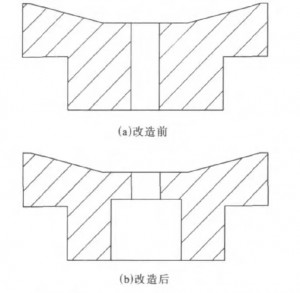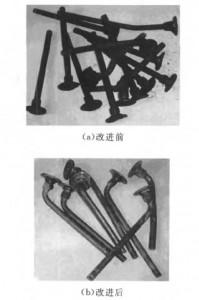1. Summary
The inner tube is a thin rubber product, and some waste products are inevitably produced during the production process, which cannot be matched with the outer tire, but its valves are intact, and these valves can be recycled and reused for inner tube production. Our company has conducted some experiments on the recycling and reuse of inner tube valves, but the appearance quality of the recycled valves is poor, and the bonding strength between the valve base and the rubber pad is low, and it needs to be reused before it can be used. .
This work improves the recycling process of waste and defective inner tube valves in order to reduce waste and improve the economic benefits of enterprises.
2. Problem Analysis
The recycling process of the original waste and defective inner tube valves is as follows: waste and defective inner tube valves → incineration → acid treatment → single-mode vulcanization (adhesive pads) → bristles on the rubber pads.
The problems of the above-mentioned process are as follows.
(1) Incineration of waste and defective inner tube valves will cause serious environmental pollution. The recycled valve body is easily deformed and has a dirty appearance. It is difficult to clean it during acid treatment, and it is easy to cause pollution to other processes.
(2) In order to facilitate the removal and removal of the valve, the original design of the vulcanization mold is a single mold and divided into 3 parts. Single-mode vulcanization takes a long time, low efficiency, high labor intensity and power consumption, and the outer surface of the vulcanized valve is prone to redundant rubber strips, the rubber wraps the mouth of the mouth, and the appearance quality of the valve does not meet the requirements. The adhesive strength of the adhesive pad is also not stable.
(3) The manual bristling of the rubber pad has the problems of high labor intensity, low efficiency, and uneven bristling surface, which affects the bonding of the rubber pad and the rubber material of the inner tube.
3 Improvement effect
Figure 2 shows the nozzle body recovered before and after the improvement of the follwing process. It can be seen from Figure 2 that the nozzle body treated by the improved process is obviously clean, and the nozzle body is almost intact. With the improved process, the amount of acid and water used is less, and the environmental pollution is less, and the cut rubber pad can be recycled to produce reclaimed rubber.
Before the improvement, the heat transfer effect of the mold is poor, and the vulcanization takes 15 minutes. According to the operating conditions of the existing flat vulcanizer, only 4 valves can be vulcanized at a time, and about 16 valves can be produced per hour, which does not include mold loading. time. With the modified combined mold, it only takes 5 minutes to vulcanize, 25 valves can be vulcanized each time, and about 300 valves can be produced per hour. It is easy to install and demould, and the labor intensity is low.
With the modified mold and deburring machine, both straight valves and curved valves can be produced, and the process conditions are the same. There is no obvious difference in appearance and internal quality between the valves recycled and reused by the improved process and the new valves. The test results show that the average bonding strength between the valve base and the rubber pad recycled by the improved process is 12.8 kN m-1, while the average bonding strength between the new valve base and the rubber pad is 12.9 kN m-1, Enterprise standards require that the bonding strength is not less than 7 kN·m-1.

After more than ten years of rapid development, China's valve industry has dominated the world. At present, my country's valve production accounts for more than 70% of the world's total production of valves, ranking first in the world's production and sales of valves. In order to meet the needs of domestic and international markets, the tubeless rate of valves has gradually increased. In 2015, the output of tubeless valves has accounted for more than half of the total output of valves. The huge domestic market demand is constantly promoting the development of the industry.
The valve market demand is mainly divided into OEM market and AM market. The latest data shows that the air valve is an important safety part of the automobile wheel module. Because it has been exposed to the outside for a long time, it needs to withstand various harsh environmental erosions. Valves are generally replaced during annual inspections and tire replacements, so the demand for valves in the AM market is much higher than that in the OEM market.

4. Epilogue
With improved technology, as long as the valve body is not deformed, it can be recycled. The quality of recycled air valves meets the requirements of use, which can reduce the consumption of raw materials and energy, reduce the production cost of inner tubes, and improve the economic benefits of enterprises.
Post time: Dec-02-2022





